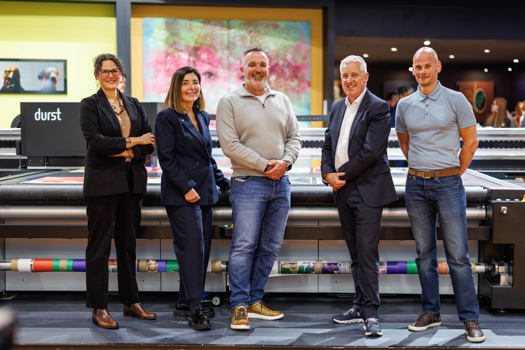St Ives chief executive Patrick Martell will chair the new board, while Clays managing director Kate McFarlan will move aside from the operating board, handing the reins to current operations director Paul Hulley, in order to take up the new full-time role of strategic director on the advisory board.
“We want to re-engineer the way we interact with publishers and the services that we offer around print to ensure we have the most effective means of delivering inventory,” said McFarlan.
“The time is right for us to be looking at this very differently. Clays has always been a business that has invested in equipment to provide a faster service and meet bigger peaks. That was fine in the glory days of print but it doesn’t work any more.
“We will look at building a strategy where we can offer the academic and trade publishing world a service that ensures that when a book is required we are providing it immediately and in the most cost-effective way.”
Hulley will support McFarlan on the advisory board alongside his new role as Clays’ managing director, while Andrew Clay will be a non-executive chairman, in addition to his role in St Ives Management Services.
On the operating board, customer service director Anne Perrin will take on added responsibilities for customer focus and delivery while Ian Smith has been promoted to the new role of manufacturing director.
In her new capacity on the advisory board, McFarlan will be responsible for creating and delivering the new business model as well as continuing to lead the sales team and customer engagement.
McFarlan said the development of a new strategy for Clays was a much-needed response to the changing consumer market following the rise of the e-book and online purchasing, the demand for single-copy and short-run print, and the decline in physical book sales.
She said: “Three years ago, everyone said e-books would take over and that print would disappear, so faced with that message printers decided to increase volume and we were also guilty of thinking that and I think it was wrong.
“The number of orders we receive every day has trebled in the past two years so we have around 170 bespoke orders every day, but for less and less volume. That’s fine but we recognise that we need to work with the publishers to ensure that how they are using our facility and how we are providing our service is the best offering going."
She added: “Now there is a clearer view of where the physical book market is going we want engage with publishers to understand their pressure points and see how we can remodel around that and provide a more in-depth solution than we currently do.”
Part of the new strategy will also focus on building the printer’s international framework through developing new and existing partnerships, McFarlan said.
“We want to make sure we can provide a UK customer with local printing from around the world without them having to develop those relationships themselves. Smaller publishers simply don’t have the resources to be able to find printers in Indo-China or Australia, for example,” she explained.
“This is a new chapter for us. We have well-developed relationships with our customers, and knowing and understanding them is hugely important to us,” McFarlan said.










